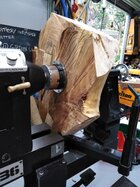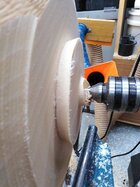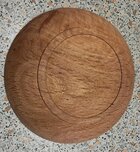My question is actually this: is a 120 ever really necessary? It seems from references in posts and utube videos that the 120 is way more common.
I've turned some pretty big crazy pieces with my 100. I have a 24" swing. I don't turn bowls that big really. (I'd kind of like to but can't imagine what someone would do with a 24 inch bowl) But I've never once thought oh this chuck may be a bit small. Jaws maybe. But I got a set of 4" jaws and can't imagine using much bigger.
It seems to me that the only advantage of the larger chuck is that it can probably take bigger jaws but unless you are doing really large crazy pieces when would you need jaws that large? Further if you are turning crazy large pieces you are probably drilling down a face plate.
I've turned some pretty big crazy pieces with my 100. I have a 24" swing. I don't turn bowls that big really. (I'd kind of like to but can't imagine what someone would do with a 24 inch bowl) But I've never once thought oh this chuck may be a bit small. Jaws maybe. But I got a set of 4" jaws and can't imagine using much bigger.
It seems to me that the only advantage of the larger chuck is that it can probably take bigger jaws but unless you are doing really large crazy pieces when would you need jaws that large? Further if you are turning crazy large pieces you are probably drilling down a face plate.



